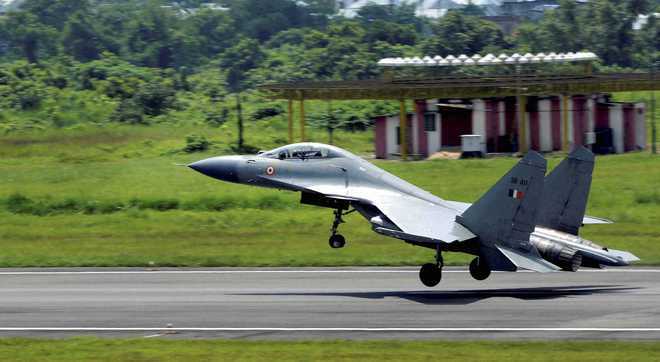New Delhi, October 9
In a major milestone, India on Friday successfully test-fired a new generation anti-radiation missile from a Su-30 MKI fighter aircraft of the Indian Air Force that can destroy a wide variety of enemy radars, air defence systems and communication networks from large stand-off ranges, officials said.
The missile, Rudram-1, is India’s first indigenously developed anti-radiation weapon system and it was test-fired by the Defence Research and Development Organisation (DRDO), at an integrated test range in Balasore in Odisha at around 10:30 AM, officials said.
They said the missile, having a speed of Mach two or twice the speed of sound, is capable of bringing down a wide-range of enemy radar systems, communication networks and air defence systems within a range of up to 250 kilometers.
In a statement, the defence ministry said Rudram hit the radiation target with “pin-point accuracy” and that the test established India’s capability to develop long range air launched anti-radiation missiles.
The flight testing of the missile comes in the midst of India’s bitter border row with China in eastern Ladakh.
“Rudram was successfully flight tested today onto a radiation target located on Wheeler Island off the coast of Odisha,” it said.
“The missile is integrated on SU-30 MKI fighter aircraft as the launch platform, having capability of varying ranges based on launch conditions. It has INS-GPS navigation with Passive Homing Head for the final attack. The RUDRAM hit the radiation target with pin-point accuracy,” the ministry said.
Defence Minister Rajnath Singh congratulated the DRDO on successful test firing of the missile, calling it a “remarkable achievement”.
“New Generation Anti-Radiation Missile (Rudram-1) which is India’s first indigenous anti-radiation missile developed by @DRDO_India for Indian Air Force was tested successfully today at ITR, Balasore. Congratulations to DRDO & other stakeholders for this remarkable achievement,” he tweeted.
The officials said the missile will be integrated into a batch of Su-30 MKI jets of the Indian Force once it is ready for induction.
Officials said the missile picks up signals from radiation emitting platforms and systems and neutralises them.
“The passive Homing Head can detect, classify and engage targets over a wide band of frequencies as programmed. The missile is a potent weapon for IAF for suppression of enemy air defence effectively from large stand-off ranges,” the ministry said.
“With this, the country has established indigenous capability to develop long range air launched anti-radiation missiles for neutralising enemy radars, communication sites and other targets,” it said.
In May last year, the Indian Air successfully test fired the aerial version of the BrahMos missile from a Su-30 MKI fighter aircraft.
The BrahMos missile provides the IAF a much desired capability to strike from large stand-off ranges on any target at sea or on land with pinpoint accuracy by day or night and in all weather conditions.
The IAF is also integrating the Brahmos supersonic cruise missile on over 40 Sukhoi fighter jets which is aimed at bolstering overall combat capability of the force.


